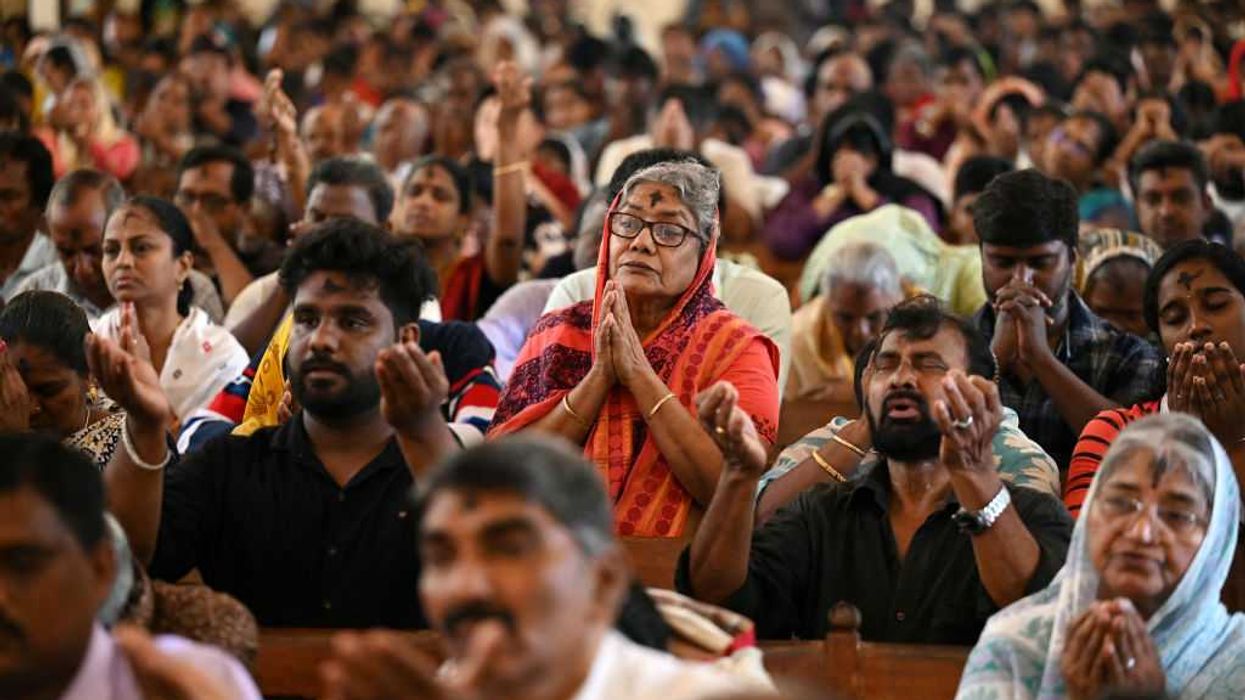Ebola is spreading, and modern protective suits are failing to stop it.
 Two days after a man in Texas was diagnosed with Ebola, Dr. Gil Mobley, a Missouri doctor, checked in and boarded a plane dressed in full protection gear Thursday morning, Oct. 2, 2014, at Hartsfield-Jackson Atlanta International Airport. He was protesting what he called mismanagement of the crisis by the federal Centers for Disease Control and Prevention. (AP Photo/Atlanta Journal-Constitution, John Spink)
Two days after a man in Texas was diagnosed with Ebola, Dr. Gil Mobley, a Missouri doctor, checked in and boarded a plane dressed in full protection gear Thursday morning, Oct. 2, 2014, at Hartsfield-Jackson Atlanta International Airport. He was protesting what he called mismanagement of the crisis by the federal Centers for Disease Control and Prevention. (AP Photo/Atlanta Journal-Constitution, John Spink)
As news erupted Sunday morning that a female nurse in Texas had been infected with Ebola, perhaps the most frightening part of the story was the revelation that she came in contact with the first U.S. Ebola patient during his second hospital visit — meaning she didn't catch the virus unawares, before health workers knew the man had Ebola.
Rather, she was fully dressed in a protective suit — gown, gloves, mask and shield — when she interacted with the man who since died of his Ebola infection.
But the case in Texas is not the first time that protective suits have failed in the developed world.
Spanish health worker Maria Teresa Romero Ramos, the first person to contract Ebola outside of Africa, was also wearing full protective gear when the virus was transmitted to her in a Madrid hospital.
The important question: Why do these protective suits keep failing?
 This Oct. 3, 3014, file photo, shows an isolation room that could be used to quarantine an Ebola patient at Memorial Hospital in Chattanooga, Tenn. The hospital has put together an action plan and staff will be going through training to deal with the possibility of an Ebola virus infected patient. (AP Photo/Chattanooga Times Free Press, Doug Strickland, File)
This Oct. 3, 3014, file photo, shows an isolation room that could be used to quarantine an Ebola patient at Memorial Hospital in Chattanooga, Tenn. The hospital has put together an action plan and staff will be going through training to deal with the possibility of an Ebola virus infected patient. (AP Photo/Chattanooga Times Free Press, Doug Strickland, File)
The short answer might be "human error."
In Ramos' case, the Spanish health worker admitted that she may have removed her suit incorrectly, touching her own face as she took it off.
In the case of the Texas nurse, it remains to be seen how she contracted the virus — but Dr. Tom Frieden, head of the Centers for Disease Control and Prevention, said Sunday that the CDC would investigate safety protocol breaches at Texas Presbyterian hospital, specifically examining how health workers removed their protective gear after treating the first U.S. Ebola patient.
In other words, the Texas nurse may have made the same mistakes the Spanish health worker made.
The failure of protective gear highlights the intense need for proper medical training, Larry Greenemeier noted in Scientific American prior to Sunday's news, and the failure also serves to shine a spotlight on how easily the disease can be spread.
Greenemeier noted that Ebola can be spread through contaminated bodily fluids, including mucus and vomit, meaning that, for instance, if an infected person sneezed on a tabletop and someone else later touched the tabletop, they could potentially catch the virus.
As the cases in Spain and Texas show, Ebola transmission is no longer limited to Africa, where the outbreak began.
Until health workers are properly trained and equipped to protect themselves from Ebola, they will continue to be at risk of catching the very virus they are working to contain — and spreading the outbreak further.
This story has been updated.
—
Follow Zach Noble (@thezachnoble) on Twitter

 Two days after a man in Texas was diagnosed with Ebola, Dr. Gil Mobley, a Missouri doctor, checked in and boarded a plane dressed in full protection gear Thursday morning, Oct. 2, 2014, at Hartsfield-Jackson Atlanta International Airport. He was protesting what he called mismanagement of the crisis by the federal Centers for Disease Control and Prevention. (AP Photo/Atlanta Journal-Constitution, John Spink)
Two days after a man in Texas was diagnosed with Ebola, Dr. Gil Mobley, a Missouri doctor, checked in and boarded a plane dressed in full protection gear Thursday morning, Oct. 2, 2014, at Hartsfield-Jackson Atlanta International Airport. He was protesting what he called mismanagement of the crisis by the federal Centers for Disease Control and Prevention. (AP Photo/Atlanta Journal-Constitution, John Spink)





